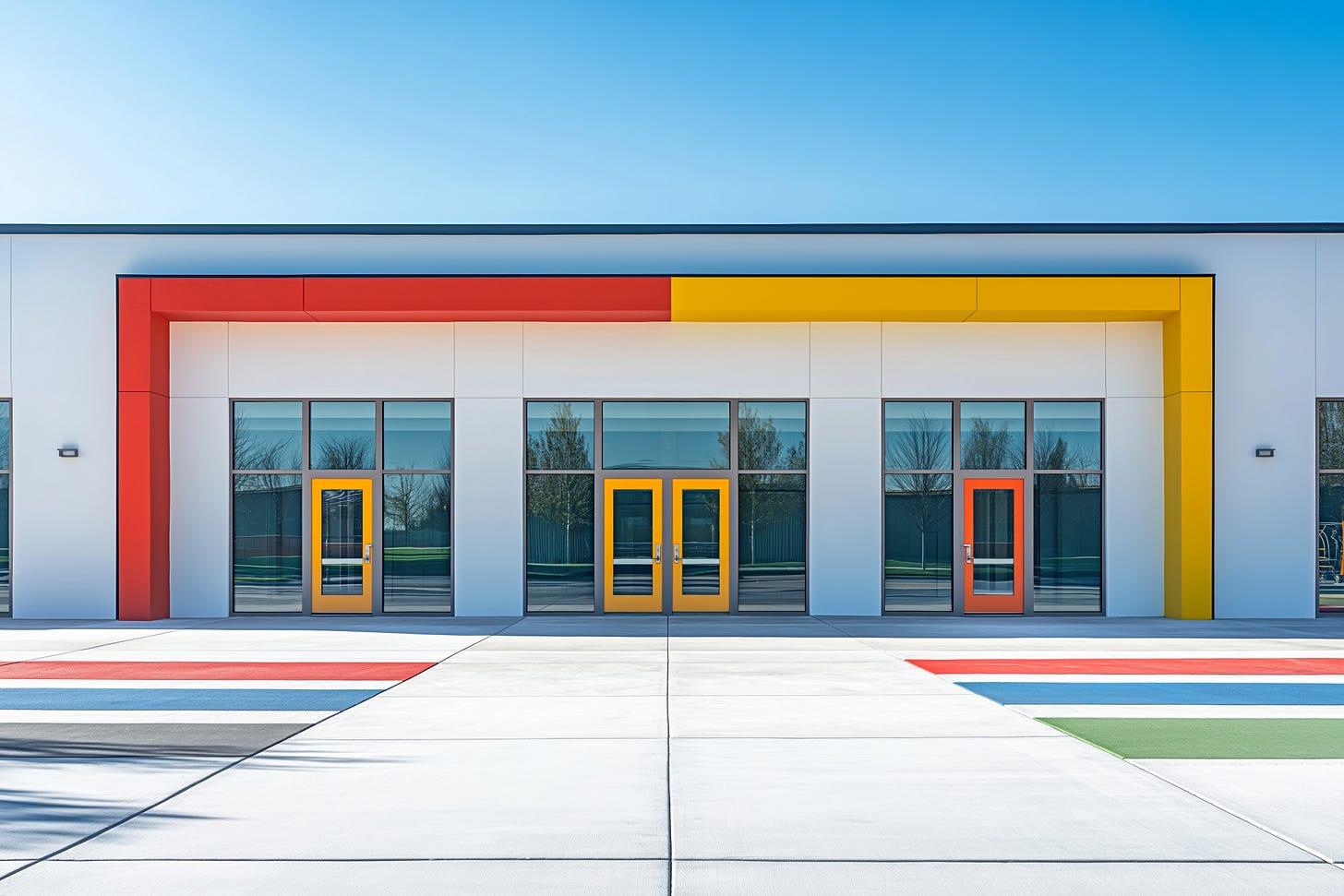Wrong Room, Wrong Focus
Why the Minister’s announcement on open-plan classrooms distracts from what really matters in education.
Today, the Minister of Education, Erica Stanford, announced that the government will no longer build open-plan classrooms, citing "overwhelming feedback" from schools that such designs are not meeting the needs of students.
Her statement reflects a common frustration: open-plan classrooms have, in many cases, created challenges, particularly around noise and behaviour management. The Minister pointed to Aotea College, where existing open-plan spaces reportedly “did not support learning outcomes” due to a lack of functionality.
From 2025, all new classrooms will be built using “standard designs” with sliding glass doors, a move the Minister claims will preserve flexibility while improving focus and functionality. She also noted a 28% reduction in average classroom build costs.
But here’s the problem: this is not the conversation we need to be having.
We are once again mistaking the container for the content.
What is an open-plan classroom, anyway?
The term “open-plan” is often used imprecisely and unhelpfully. Its origins lie in 1970s architectural experiments that removed walls in the name of collaboration, but often failed due to poor implementation and lack of pedagogical support.
In the 2010s, the Ministry of Education embraced a new model: Modern Learning Environments (MLEs): flexible, digitally enabled spaces designed to promote collaboration, agency, and adaptability. These were intended to align with 21st-century pedagogies. However, in many schools, the physical redesign was not matched by professional development, staffing ratios, or leadership capability needed to make the most of these spaces.
Over time, “open-plan” became a kind of catch-all scapegoat for what happens when form is prioritised over function, and when pedagogy doesn’t evolve to meet the demands of space.
The Real Issue Is Not the Room, It’s the Practice
The Minister is not wrong to acknowledge that some schools have found open-plan settings challenging. But to attribute learning difficulties to physical space alone misses the deeper, more complex truth:
It’s not the environment that fails students, it’s the quality of teaching, leadership, and support within it.
Highly skilled teachers in collaborative teams can achieve exceptional outcomes in open, flexible spaces. Poorly supported teachers can struggle in traditional single-cell classrooms. The determining factor is not the number of walls, but the quality of professional learning, pedagogical clarity, and relational trust.
This announcement gives the appearance of decisive action while sidestepping the real work:
Where is the investment in coaching and collaborative inquiry?
Where is the support for understanding developmental learning and student agency?
Where is the national strategy for building teacher capability in diverse, inclusive practice?
You cannot solve pedagogical uncertainty by rearranging the furniture.
We’ve Seen This Before
This government has repeatedly defaulted to surface-level interventions. We’ve had the rebranding of the maths and English curriculum under the guise of “structure.” We’ve had an ideological crusade against teacher autonomy and so-called “curriculum design.” Now we’re targeting buildings, as if four walls will insulate children from the systemic inequities many are living through.
The implication is that by building more traditional rooms, we can restore focus and order. But let’s not kid ourselves: the children are not struggling because they’re sitting in an open-plan classroom. They’re struggling because:
Their learning needs are unmet,
Their teachers are exhausted and under-supported,
And their lives are shaped by factors far beyond the walls of any classroom.
What Do Fit-for-Purpose Environments Actually Look Like?
A truly fit-for-purpose environment isn’t defined by the presence or absence of sliding doors. It is defined by:
Flexibility to adapt to different learners and tasks,
A sense of belonging - spaces that reflect culture, identity, and community,
A culture of collaboration, not just among students, but between teachers and whānau,
And intentional pedagogy that leverages space for deeper learning, not compliance.
The focus must shift from blaming the walls to examining what actually happens within them.
There is, in fact, a deep irony in this conversation. Some of the most powerful and effective pedagogies take place outside of any walls at all; in forest schools, bush kindergartens, and outdoor learning programmes where children thrive in open-air, flexible, and sensory-rich environments. These approaches succeed not because of where they happen, but because of how they are facilitated: with thoughtful, responsive teaching grounded in child development and agency.
The message is clear: it is not the architecture that determines educational success. It is the quality of the practice it enables or inhibits.
Where the Conversation Should Be
Imagine if today’s announcement had said:
“We’ve listened to the profession. We know that learning environments - physical, relational, and pedagogical - matter. So we’re investing in high-trust, research-informed teaching practice. We’re prioritising teacher development over architectural redesign. And we’re resourcing schools not just with buildings, but with the professional and cultural capability to use them well.”
That would be the announcement our sector actually needs.
Until then, we’ll keep fixing the room while ignoring the real renovation: the one our teaching profession has been crying out for.




Another excellent essay
Totally agree! Big announcements that ignore what we truly need right now.